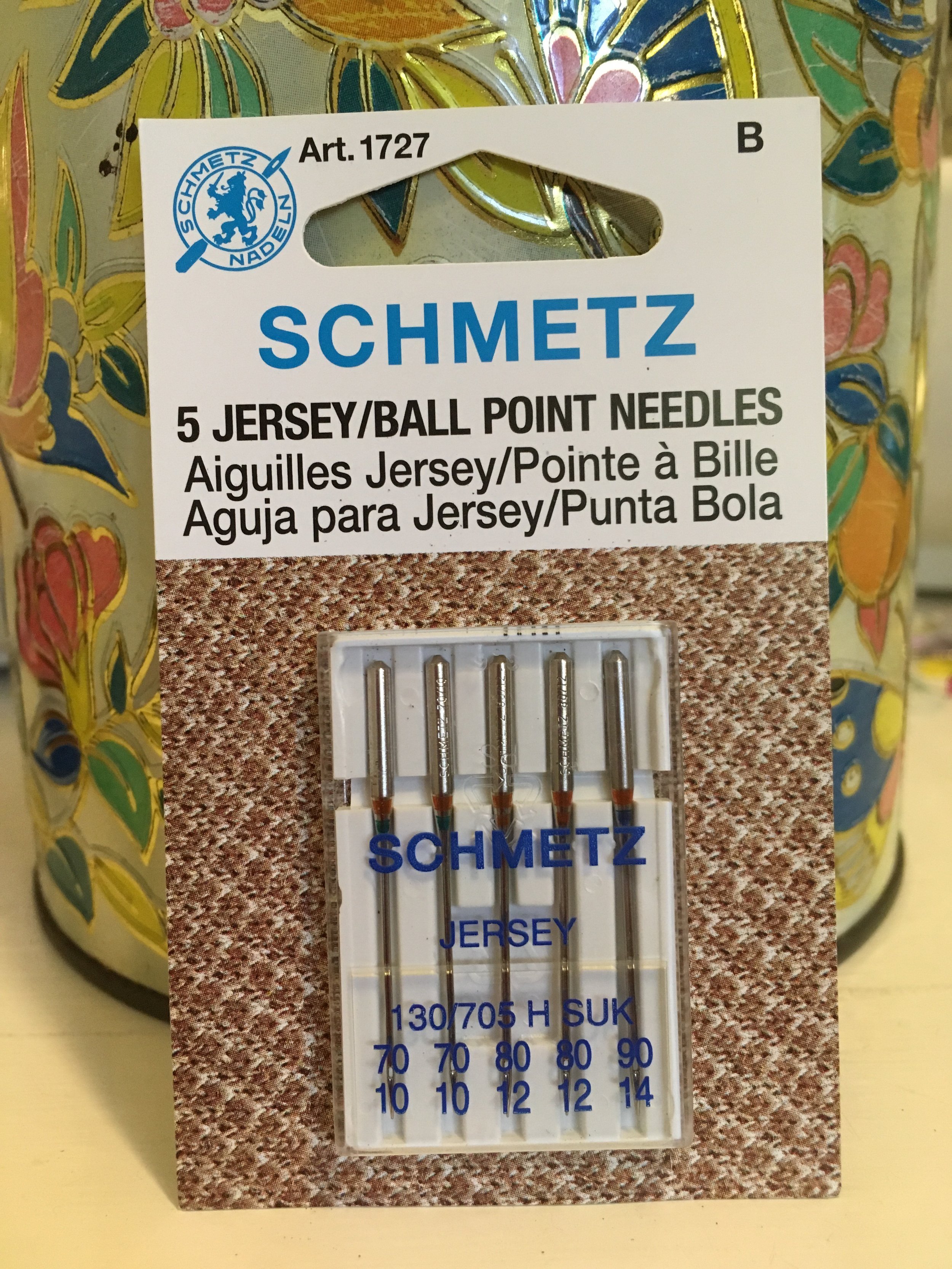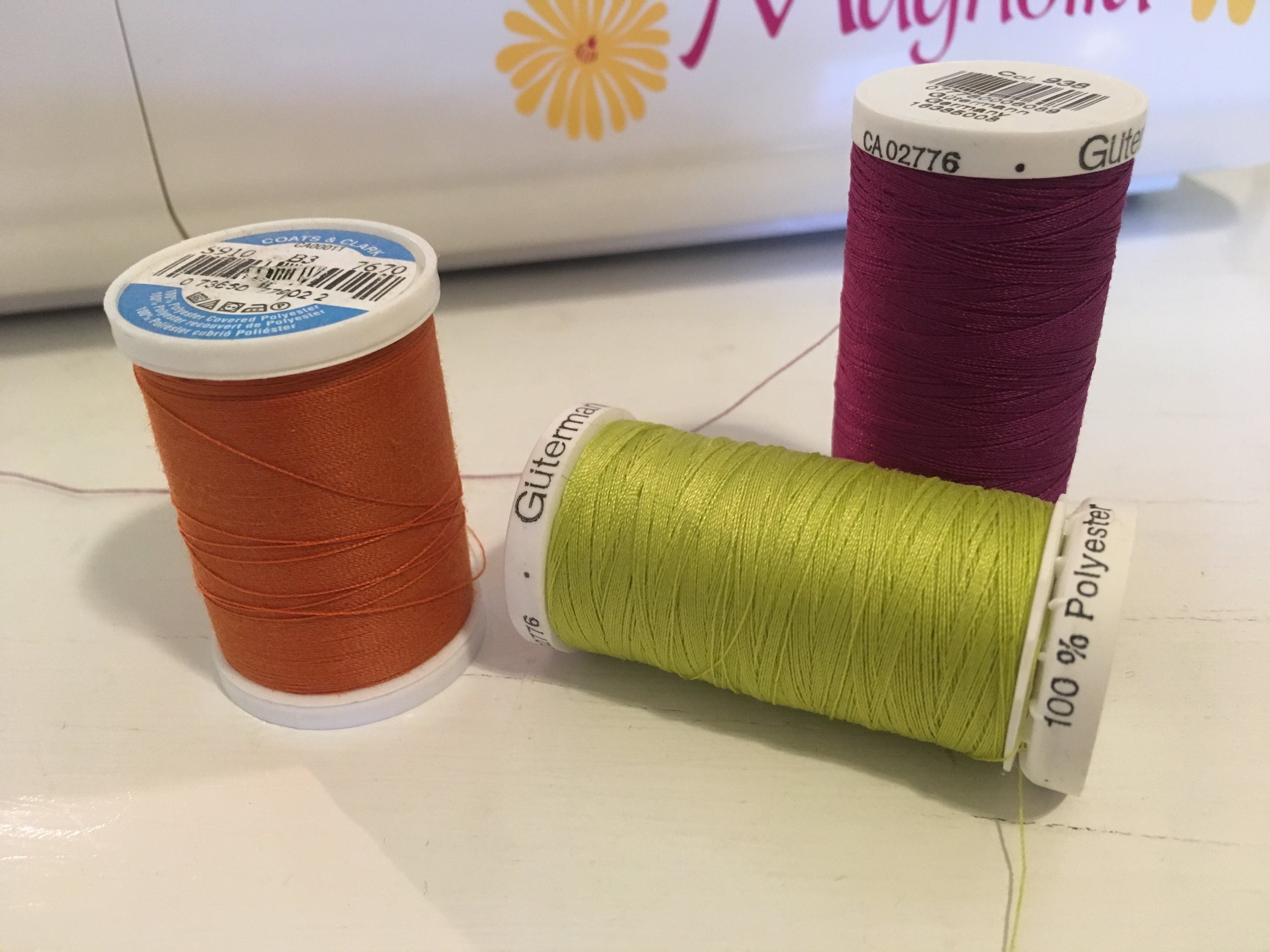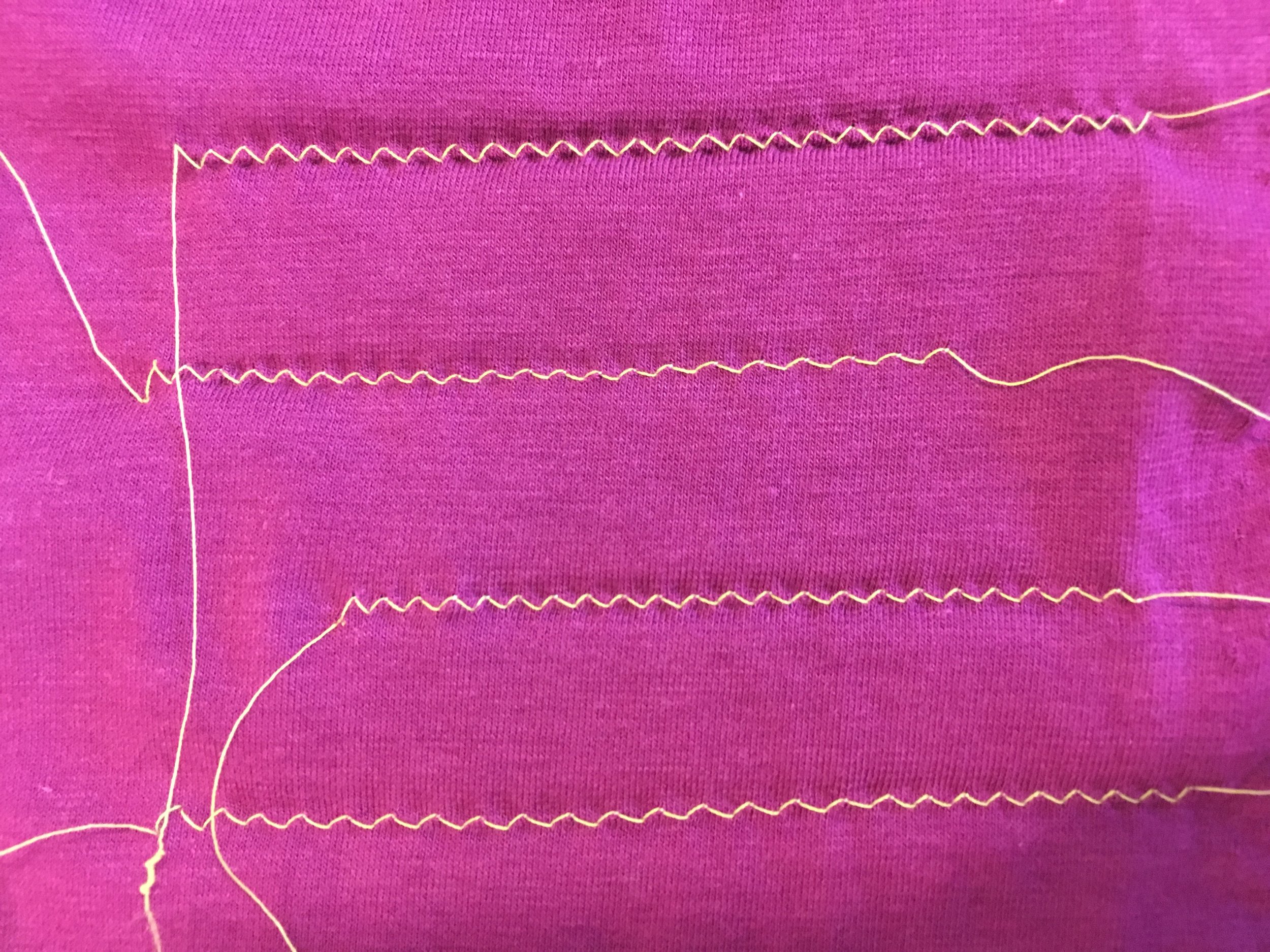Stitching Knits using a Plain Ol' Sewing Machine
By Sarah
I've been sewing with knits for years, even before I had a serger. I think one of the first things I made with this delightful and forgiving fabric was a baby blue interlock knit tank top with brown and white striped bias tape, also made from an interlock knit, that trimmed both neck and arm holes. I wore that thing for years! Offered on my family's Kenmore sewing machine, purchased at our local Sears, the humble zigzag stitch option was the key to my shirts' longevity. I could make a joke here, about how 'it definitely wasn't the quality of the machine that made it last so long', but that would be lie. That Kenmore was a darn good machine and bought for a very reasonable price- a steal compared to some machines on the market. Never feel inferior about your machine's capabilities even if you sew with Hello Kittys' help. But, I digress. If you are scared to sew with knits because you don't have a serger or for whatever reason, follow these tips below for sewing knits on a regular sewing machine, no serger required!
Ballpoint needles are pretty important when sewing knits. Hard to see with the naked eye and not truly a ball in shape these rounded tip needles are designed to slide through knit fabric without tearing or splitting any of the yarns, as they likely would with a sharp needle. Furthermore, neglecting to use a ballpoint needle may cause the dreaded skipped stitches we all loath. Another important thing to remember is to use polyester thread, not cotton. It is much stronger and with all the stretching a knit garment endures, the sturdier the better. Now, on to the zigzag stitch.
Most newer model machines, post 1960's?, have the zigzag option. If your machine only has a straight stitch then sewing with knits may be a challenge. Stretchy thread isn't a thing so unless you are making a knit garment that is looser in fit, where the seams won't be stretched, straight stitches risk popping or breaking because the stitch is stationary and doesn't have the flexibility of a zigzag stitch. If your only choice is to use a straight stitch, consider stitching two lines, side by side, to help reinforce the seam and maybe hem or finish neck and armholes by hand.
When I use my zigzag stitch I like to adjust the stitch width so that the zigzag isn't so zigzagy, it's more wavy-like. Play around with different widths until you get your desired stitch. On my machine I like to set the zigzag stitch width to 3.5, which I've found works great. I didn't touch the default stitch length at all. It doesn't look too much like a zigzag stitch and it stretches nicely with the jersey I am using here. That being said, every fabric is different, so take a scrap of the fabric you will be working with and before you start sewing run some test stitches to see what works best and make a note of it.
I allow a little more for seam allowance than what most knit patterns call for, because I think most assume you have a serger and their seam allowances can be as little as 3/8". (note: this does not mean I added seam allowance when cutting my pattern out) I also went ahead and stitched two rows, for a stronger seam. Sergers overlock raw edges making a super secure stitch and finish, something a regular sewing machine cannot do. So, for piece of mind, I like to stitch in a little bit more from the raw edge for better durability. It is also very hard to stitch that close to the edge with jersey, it stars to get a mind of its' own. Scary!
The seam from the outside looks pretty darn good, huh? Think about were the garment will experience the most stress and reinforce those areas with a second row of stitching, if you like. Knits do not fray, they ravel and the majority of jerseys and interlocks will be fine if left not overlocked, because they are knitted very tight. The closer a fabric is woven or or the tighter a fabric is knitted, the less it will fray or ravel. The knit garments I have made with my regular old machine have not raveled at all. It's OK to leave those raw edges raw. Really! If you decide to work with a looser, sweater knit, then you need to think about binding those raw edges somehow because they will eventually ravel.
The pattern used here is the Lark by Grainline and is the boatneck version. The instructions have you turn in the raw edge of the neckline and stitch it down, so there's no fussy bands to mess with. I used the same zigzag width setting for this, the hem and the sleeve hem. Voila! That is how you can sew with knits using your sewing machine. It really is a breeze!
*This post is dedicated to all the naysayers out there who shun knits because of the misguided notion that one needs a serger to sew them. Come all ye sewists! Try your hand at a garment made of knit. We have a gorgeous selection of solids and prints in jersey, interlock, ponte and sweater knits! Many are available through our online shop as well. Thanks for reading!!!







